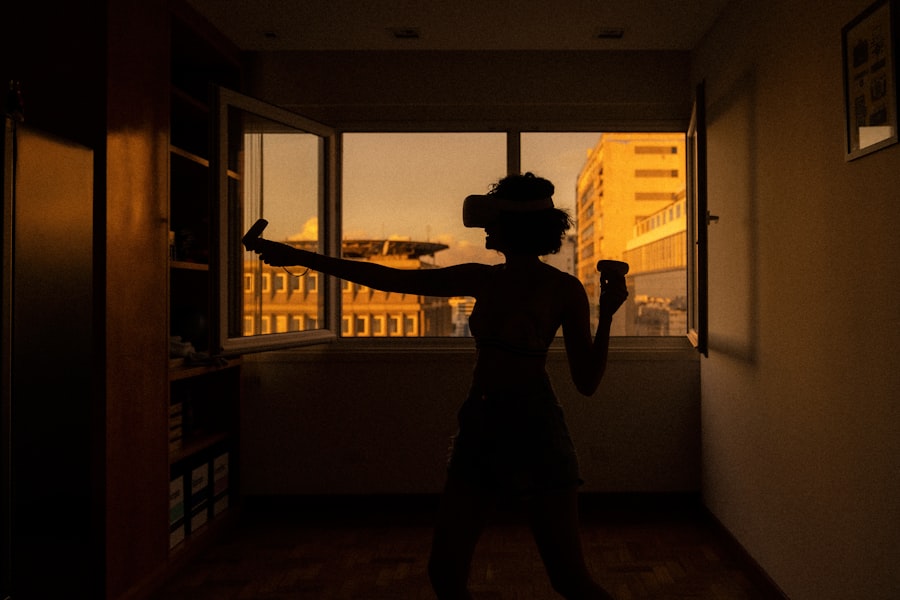The XR Metaverse represents a convergence of various immersive technologies, including virtual reality (VR), augmented reality (AR), and mixed reality (MR). This digital universe is not merely a single platform but an expansive network of interconnected virtual environments where users can interact with each other and digital objects in real-time. The term “XR” stands for extended reality, encompassing all forms of immersive experiences that blend the physical and digital worlds.
In essence, the XR Metaverse is a shared, persistent space that transcends geographical boundaries, allowing individuals to engage in social interactions, commerce, education, and entertainment in ways that were previously unimaginable. At its core, the XR Metaverse is built on advanced technologies such as 3D modeling, artificial intelligence, and blockchain.
For instance, platforms like Decentraland and Roblox have already begun to showcase the potential of the XR Metaverse by allowing users to design their own spaces, host events, and even trade virtual real estate. As the XR Metaverse continues to evolve, it promises to redefine how we perceive reality and interact with one another.
Key Takeaways
- The XR Metaverse is a virtual environment that combines elements of augmented reality (AR) and virtual reality (VR) to create an immersive and interactive digital space.
- Virtual reality (VR) and augmented reality (AR) have evolved from niche technologies to mainstream applications, paving the way for the development of the XR Metaverse.
- The XR Metaverse has the potential to impact society and culture by changing the way people interact, communicate, and experience the world around them.
- Businesses and entertainment industries are exploring the possibilities of the XR Metaverse to create new experiences, products, and services for consumers.
- Navigating the XR Metaverse requires careful consideration of ethical implications and challenges, such as privacy, security, and inclusivity.
The Evolution of Virtual Reality and Augmented Reality
The journey of virtual reality and augmented reality has been marked by significant technological advancements and cultural shifts. Virtual reality, which immerses users in a completely digital environment, has its roots in the 1960s with the invention of the Sensorama, a multi-sensory machine that provided users with a simulated experience. However, it wasn’t until the 1990s that VR began to gain traction in gaming and entertainment, with systems like the Sega VR headset and Virtuality arcade machines.
Despite early enthusiasm, the technology faced limitations due to high costs and inadequate hardware capabilities. On the other hand, augmented reality emerged as a complementary technology that overlays digital information onto the real world. The introduction of smartphones equipped with cameras and sensors in the late 2000s catalyzed the growth of AR applications.
One of the most notable examples is Pokémon GO, released in 2016, which allowed players to capture virtual creatures in real-world locations. This phenomenon not only demonstrated the potential of AR but also highlighted how these technologies could foster social interactions and community engagement. As both VR and AR technologies matured, they began to converge into what we now refer to as the XR Metaverse.
The Impact of the XR Metaverse on Society and Culture

The XR Metaverse is poised to have profound implications for society and culture, reshaping how we communicate, learn, and express ourselves. One of the most significant impacts is the potential for enhanced social connectivity. In a world increasingly defined by digital interactions, the XR Metaverse offers a more immersive alternative to traditional social media platforms.
Users can engage in shared experiences, attend virtual concerts, or participate in collaborative projects regardless of their physical location. This level of interaction fosters a sense of community that transcends geographical barriers. Moreover, the XR Metaverse has the potential to democratize access to information and resources.
Educational institutions are beginning to explore how immersive environments can enhance learning experiences. For example, virtual classrooms can simulate historical events or scientific phenomena, allowing students to engage with content in a more meaningful way. This shift could lead to more equitable educational opportunities, particularly for individuals in remote or underserved areas.
Additionally, cultural institutions like museums are leveraging XR technology to create virtual exhibits that reach global audiences, thereby preserving and sharing cultural heritage in innovative ways.
Exploring the Possibilities of the XR Metaverse in Business and Entertainment
| Metrics | Business | Entertainment |
|---|---|---|
| Market Size | Projected to reach 800 billion by 2024 | Expected to grow at a CAGR of 45% from 2021-2026 |
| Adoption Rate | Increasing as businesses integrate XR for training, collaboration, and customer engagement | Growing as consumers seek immersive experiences in gaming, live events, and virtual concerts |
| Challenges | Integration with existing systems, privacy concerns, and high implementation costs | Content creation, user retention, and hardware compatibility |
| Opportunities | Enhanced customer experiences, remote work capabilities, and innovative marketing strategies | Immersive storytelling, interactive experiences, and virtual social gatherings |
The business landscape is undergoing a transformation as companies recognize the potential of the XR Metaverse for innovation and engagement. In retail, brands are experimenting with virtual storefronts that allow customers to browse products in immersive environments. For instance, IKEA has developed an AR app that enables users to visualize furniture in their homes before making a purchase.
This not only enhances the shopping experience but also reduces return rates by helping customers make informed decisions. In entertainment, the XR Metaverse is revolutionizing how content is created and consumed. Filmmakers are exploring virtual production techniques that blend live-action footage with digital environments, as seen in productions like “The Mandalorian.” This approach allows for greater creative freedom and reduces costs associated with traditional set design.
Titles like “Beat Saber” and “Half-Life: Alyx” have set new standards for immersive gameplay, drawing players into richly detailed worlds where they can interact with their surroundings in unprecedented ways.
The Challenges and Ethical Considerations of the XR Metaverse
Despite its vast potential, the XR Metaverse also presents numerous challenges and ethical considerations that must be addressed as it continues to develop. One major concern is privacy and data security. As users navigate these immersive environments, they generate vast amounts of data that can be exploited if not properly protected.
Companies must implement robust security measures to safeguard user information while also being transparent about data collection practices. Another pressing issue is the potential for addiction and escapism. The immersive nature of the XR Metaverse can lead individuals to spend excessive amounts of time in virtual spaces at the expense of their real-world responsibilities and relationships.
This phenomenon raises questions about mental health and well-being in an increasingly digital society. Developers and platform creators must consider how to promote healthy usage patterns while still providing engaging experiences.

Safety First
Prioritizing safety is key by familiarizing oneself with platform guidelines and community standards. Many XR environments have rules in place to ensure respectful interactions among users; adhering to these guidelines fosters a positive atmosphere for everyone involved.
Setting Boundaries
Users should be mindful of their time spent in these immersive spaces. Setting boundaries around usage can help prevent feelings of overwhelm or disconnection from reality.
Enhancing Social Experiences
Engaging with friends or family members within the XR Metaverse can also enhance social experiences while providing a support system for navigating this new landscape together.
The Future of the XR Metaverse: Predictions and Speculations
Looking ahead, the future of the XR Metaverse appears promising yet uncertain. As technology continues to advance at a rapid pace, we can expect more sophisticated hardware that enhances user experiences. For instance, developments in haptic feedback technology may allow users to feel sensations within virtual environments, further blurring the lines between reality and simulation.
Moreover, as more industries adopt XR technologies, we may witness an increase in cross-disciplinary collaborations that drive innovation. For example, healthcare professionals are exploring how VR can be used for surgical training or patient therapy. Such applications could revolutionize medical education and patient care while demonstrating the versatility of the XR Metaverse across various sectors.
How to Get Involved in the XR Metaverse Community
For those interested in becoming part of the XR Metaverse community, there are numerous avenues to explore. Joining online forums or social media groups dedicated to XR topics can provide valuable insights and connections with like-minded individuals. Participating in virtual events or conferences focused on immersive technologies offers opportunities for networking and learning from industry experts.
Additionally, engaging with platforms that facilitate user-generated content can empower individuals to contribute creatively to the XR Metaverse. Whether through designing virtual spaces or creating interactive experiences, these contributions enrich the overall ecosystem while allowing users to express their unique perspectives within this evolving digital landscape.
If you are interested in exploring virtual spaces and the concept of the metaverse, you may want to check out the article Entering the Metaverse: Exploring Virtual Spaces. This article delves into the immersive experiences and possibilities that the metaverse offers, providing insights into how virtual worlds can shape our future interactions and connections.
FAQs
What is the XR Metaverse?
The XR Metaverse refers to a virtual reality space that combines elements of augmented reality (AR), virtual reality (VR), and mixed reality (MR) to create an immersive and interactive digital environment.
How does the XR Metaverse work?
The XR Metaverse works by using advanced technologies such as VR headsets, AR glasses, and MR devices to create a digital environment where users can interact with each other and digital objects in real time.
What are the potential applications of the XR Metaverse?
The XR Metaverse has potential applications in various industries such as gaming, entertainment, education, healthcare, and business. It can be used for virtual meetings, immersive training simulations, virtual events, and interactive storytelling experiences.
What are some key features of the XR Metaverse?
Key features of the XR Metaverse include immersive 3D environments, real-time interaction with other users, spatial computing, and the ability to create and manipulate digital objects within the virtual space.
Challenges and concerns related to the XR Metaverse include issues of privacy and data security, potential for addiction and overuse, and the need for standards and regulations to ensure ethical and responsible use of the technology.

Leave a Reply